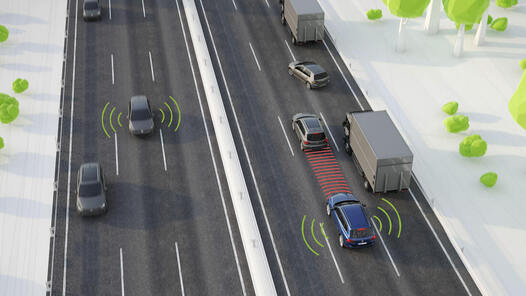Advanced Driver Assistance Systems (ADAS) Testing
All modern vehicles are now being equipped with Advanced Driver Assistance Systems (ADAS). The development of such systems requires complex testing, including the ability to control and calculate relative positions between multiple vehicles and objects in real-time.
Dewesoft provides an effective solution for ADAS testing with highly accurate GPS positioning systems to measure relative positions and velocity between multiple vehicles and objects.
All modern vehicles are now being equipped with Advanced Driver Assistance Systems (ADAS). The development of such systems requires complex testing, including the ability to control and calculate relative positions between multiple vehicles and objects in real-time.
Dewesoft provides an effective solution for ADAS testing with highly accurate GPS positioning systems to measure relative positions and velocity between multiple vehicles and objects.
ADAS Testing Overview
The latest GPS based position measurement technology is used to provide a highly accurate, easy-to-use ADAS test system. RTK (Real Time Kinetic) option for GPS sensors provide high positioning accuracy (< 2cm). A static GPS base station sends the GPS correction data over to the moving vehicles.
Two or more vehicles can be connected and observed. Synchronized data from all vehicles provide very accurate position and distance information relative to each other and/or to a fixed object. In addition, DS-IMU2 provides accurate measurement of all vehicle dynamics, including side-slip angle. All data is transferred to a master system which obtains real-time measurement results during the test run.
A robust WLAN solution is used to keep the communication between the vehicles for up to a distance of 1 km. There is theoretically no limit to the number of vehicles within this measurement - only the WLAN bandwidth limitation.
The latest GPS based position measurement technology is used to provide a highly accurate, easy-to-use ADAS test system. RTK (Real Time Kinetic) option for GPS sensors provide high positioning accuracy (< 2cm). A static GPS base station sends the GPS correction data over to the moving vehicles.
Two or more vehicles can be connected and observed. Synchronized data from all vehicles provide very accurate position and distance information relative to each other and/or to a fixed object. In addition, DS-IMU2 provides accurate measurement of all vehicle dynamics, including side-slip angle. All data is transferred to a master system which obtains real-time measurement results during the test run.
A robust WLAN solution is used to keep the communication between the vehicles for up to a distance of 1 km. There is theoretically no limit to the number of vehicles within this measurement - only the WLAN bandwidth limitation.


